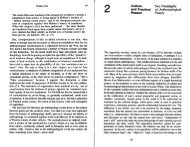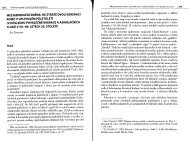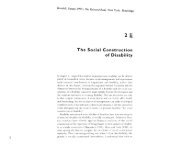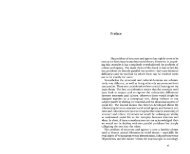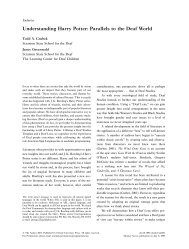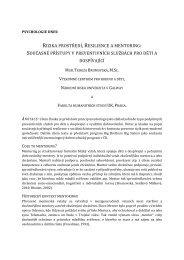Morphogenesis versus Structuration: On Combining ... - Moodle
Morphogenesis versus Structuration: On Combining ... - Moodle
Morphogenesis versus Structuration: On Combining ... - Moodle
Create successful ePaper yourself
Turn your PDF publications into a flip-book with our unique Google optimized e-Paper software.
<strong>Morphogenesis</strong> <strong>versus</strong> structuration 457<br />
actors in producing and reproducing their society, whilst acknowledging<br />
that they necessarily employ societal properties in the process.<br />
Thus structuralism and functionalism are criticized for subordinating<br />
the individual to society and Giddens aims to transcend the subject/<br />
object dualism by elaborating on common elements in the work of<br />
Marx and the later Wittgenstein which construe the generation of<br />
society as the outcome of praxis.<br />
(c) Finally he rejects any theory which represses time by separating<br />
statics from dynamics and analysing the two separately. For to<br />
Giddens, any theory embodying the interdependence of structure<br />
and action is predicated upon grasping the temporal and spatial<br />
locations which are inherent in the constitution of all social interaction.<br />
Thus the division between synchrony and diachrony must also<br />
be transcended in order to capture the temporal release of unintended<br />
consequences and their subsequent influence on later action.<br />
Because of this rejection of the three dichotomies, 'structuration'<br />
is quintessentially concerned with duality not dualism, with amalgamating<br />
the two sides of each divide. This is to be achieved through<br />
the central notion of the 'duality of structure' which refers to 'the<br />
essential recursiveness of social life, as constituted in social practices:<br />
structure is both medium and outcome of the reproduction of<br />
practices. Structure enters simultaneously into the constitution of the<br />
agent and social practices, and "exists" in the generating moments of<br />
this constitution'.l2 This involves an image of society as a continuous<br />
flow of conduct (not a series of acts) which changes or maintains a<br />
potentially malleable social world. In turn it obviously proscribes<br />
any discontinuous conceptualization of structure and action-the<br />
intimacy of their mutual constitution defies it. '<strong>Structuration</strong>' is<br />
predicated upon the 'duality of structure': analytically it disengages<br />
continuities or transformations in the reproduction of social systems.<br />
Because of the dynamic interplay of the two constituent elements,<br />
'structuration' does not denote fixity, durability, or even a point<br />
reached in development. '<strong>Structuration</strong>' itself is ever a process and<br />
never a product.<br />
In elaborating his theory of 'structuration', however, Giddens<br />
completely ignores existing efforts to perform the same task of<br />
re-uniting structure and action from within general systems theory.<br />
<strong>Morphogenesis</strong> This perspective has an even better claim than the<br />
former to call itself a 'non-functionalist manifesto';13 since a major<br />
part of its background was the growing disenchantment on the part<br />
of neo-functionalists with every remnant of the Organic Analogywith<br />
the over-integrated view of social structure and the over-socialized<br />
view of man; with the assumption of immanent equilibration unrelated<br />
to human decision-making; with its failure to incorporate time-a<br />
double failure involving the absence of an analytical history of



